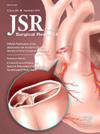Investigating the Burden of Traumatic Injuries and Access to Trauma Centers in Rural Riyadh
IF 1.8
3区 医学
Q2 SURGERY
引用次数: 0
Abstract
Introduction
Trauma is a major cause of death and disability among young adults in Saudi Arabia, with a road traffic fatality rate three times higher than other high-income countries. The vast expanse of the Riyadh region comprises 21 governorates over 156,078 square miles, most of which is rural. Although delays in access to trauma care pose a significant mortality and economic burden, regions at highest risk of delays have not been previously studied. This paper aims to identify the trauma center distribution, trauma burden, and areas with delayed access to trauma care in the rural governorates of the Riyadh region.
Methods
We conducted a retrospective review of 24,268 reports from 17 rural governorates in the Riyadh region from the official data registry of the Red Crescent of Saudi Arabia from January 2021 to March 2023. Higher severity cases were classified under the red criteria (for age 15-64 ys: systolic blood pressure (SBP) < 90 mmHg or heart rate > SBP); for age ≥65 ys: SBP <110 mmHg or heart rate > SBP) based on established trauma activation criteria. We geospatially mapped all level 1-3 trauma centers in the rural governorates of the Riyadh region with an overlay of trauma burden, and identified red criteria cases and those that had delayed access to trauma centers in each of the governorates. Data were mapped using Quantum Geographic Information System, and analysis was performed using R statistics.
Results
Rural Riyadh lacks level 1 trauma centers, with level 3 facilities primarily delivering trauma care. Among the reported trauma cases, majority were classified under the red criteria (67.7%, n = 16,433). Al-Kharj emerged as a hotspot for trauma cases, reporting the highest number of cases (21.4%, n = 5202) and red criteria cases (21.4%, n = 3512), followed by Al-Quwayiyah (14.4%, n = 3490) and Al-Majma'ah (9.8%, n = 2369). Blunt trauma predominated (79.4%, n = 19,280), with a substantial portion meeting the red criteria (62.4%, n = 12,032), while penetrating injuries were less common (14.5%, n = 3524). Of the red criteria cases, 38.2% (n = 6048) were delayed, most notably in Al-Kharj (21.8%, n = 1320).
Conclusions
In conclusion, our study reveals significant gaps in trauma care access and burden across rural governorates in the Riyadh region. The absence of level 1 trauma centers, coupled with high proportions of red criteria cases and delays in accessing care, underscores the need for targeted interventions and resource optimization. Addressing these challenges requires standardized trauma systems, improved transfer protocols, and a national trauma registry for comprehensive monitoring of patient outcomes.
调查利雅得农村地区的外伤负担和外伤中心的使用情况。
导言:外伤是沙特阿拉伯青壮年死亡和残疾的主要原因,其道路交通死亡率比其他高收入国家高出三倍。利雅得地区幅员辽阔,由 21 个省组成,面积达 156,078 平方英里,其中大部分是农村地区。尽管延误创伤救治会造成严重的死亡率和经济负担,但此前并未对延误风险最高的地区进行过研究。本文旨在确定利雅得地区农村省份的重创中心分布、重创负担和重创救治延误地区:我们对利雅得地区 17 个农村省份的 24,268 份报告进行了回顾性审查,这些报告来自沙特阿拉伯红新月会 2021 年 1 月至 2023 年 3 月期间的官方数据登记。严重程度较高的病例按照红色标准进行分类(15-64 岁:收缩压 SBP);≥65 岁:收缩压 SBP):SBP)。我们在利雅得地区的农村省份绘制了所有 1-3 级创伤中心的地理空间图,并叠加了创伤负担图,还确定了红色标准病例和延迟进入各省创伤中心的病例。数据使用 Quantum 地理信息系统绘制,并使用 R 统计进行分析:利雅得农村地区缺乏一级创伤中心,主要由三级设施提供创伤护理。在报告的外伤病例中,大部分属于红色标准(67.7%,n = 16,433)。Al-Kharj 是创伤病例的热点地区,报告的病例数最多(21.4%,n = 5202),红色标准病例数最多(21.4%,n = 3512),其次是 Al-Quwayiyah(14.4%,n = 3490)和 Al-Majma'ah(9.8%,n = 2369)。钝器伤占多数(79.4%,n = 19280),其中相当一部分符合红色标准(62.4%,n = 12032),而穿透伤较少见(14.5%,n = 3524)。在符合红色标准的病例中,38.2%(n = 6048)的病例被延误,其中以 Al-Kharj 的延误最为明显(21.8%,n = 1320):总之,我们的研究揭示了利雅得地区农村各省在创伤救治和负担方面存在的巨大差距。一级创伤中心的缺失,加上红色标准病例的高比例和就医延迟,凸显了有针对性干预和资源优化的必要性。要应对这些挑战,就必须建立标准化的创伤系统,改进转院协议,并建立国家创伤登记册,以全面监测患者的治疗效果。
本文章由计算机程序翻译,如有差异,请以英文原文为准。
求助全文
约1分钟内获得全文
求助全文
来源期刊
CiteScore
3.90
自引率
4.50%
发文量
627
审稿时长
138 days
期刊介绍:
The Journal of Surgical Research: Clinical and Laboratory Investigation publishes original articles concerned with clinical and laboratory investigations relevant to surgical practice and teaching. The journal emphasizes reports of clinical investigations or fundamental research bearing directly on surgical management that will be of general interest to a broad range of surgeons and surgical researchers. The articles presented need not have been the products of surgeons or of surgical laboratories.
The Journal of Surgical Research also features review articles and special articles relating to educational, research, or social issues of interest to the academic surgical community.

 求助内容:
求助内容: 应助结果提醒方式:
应助结果提醒方式:


